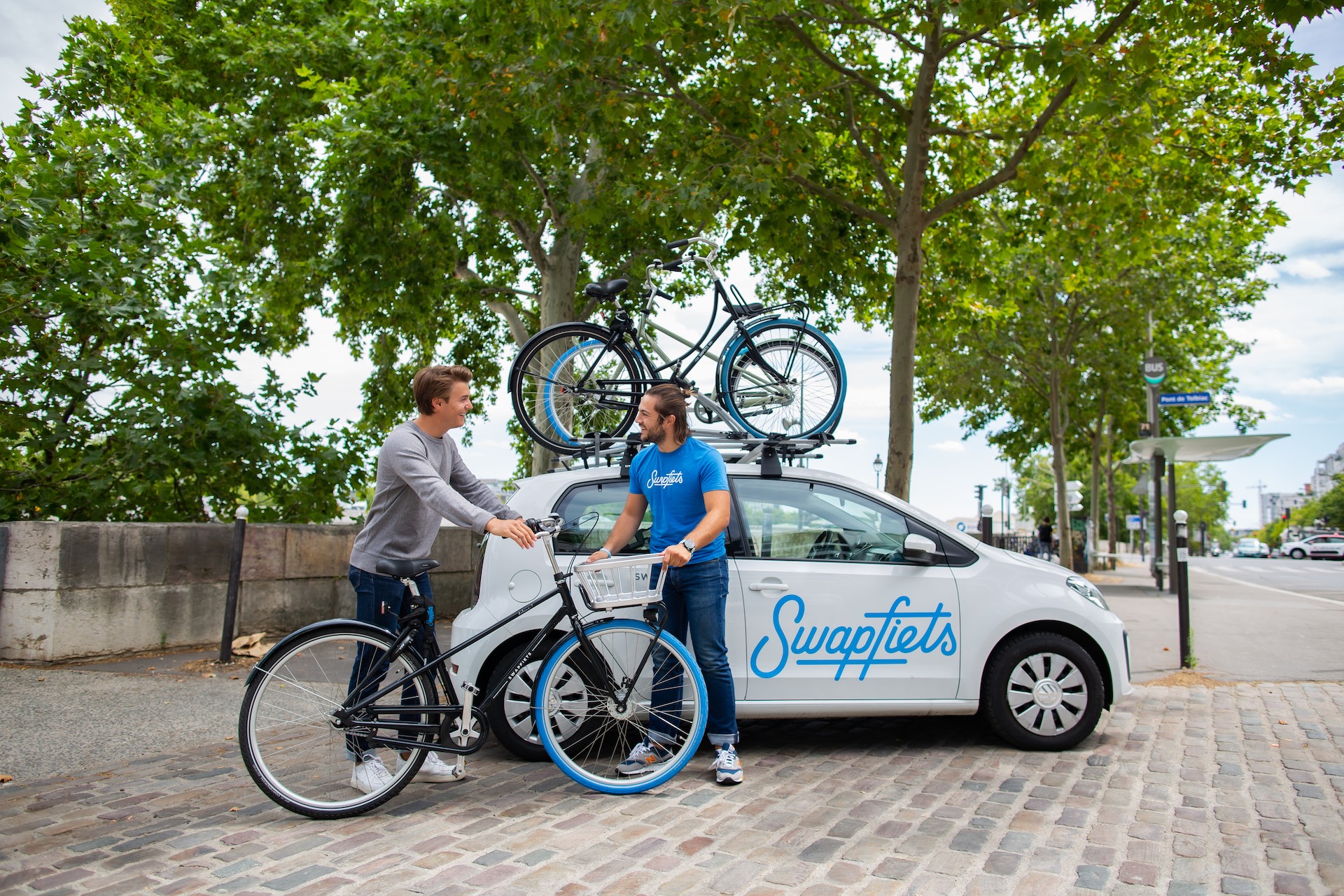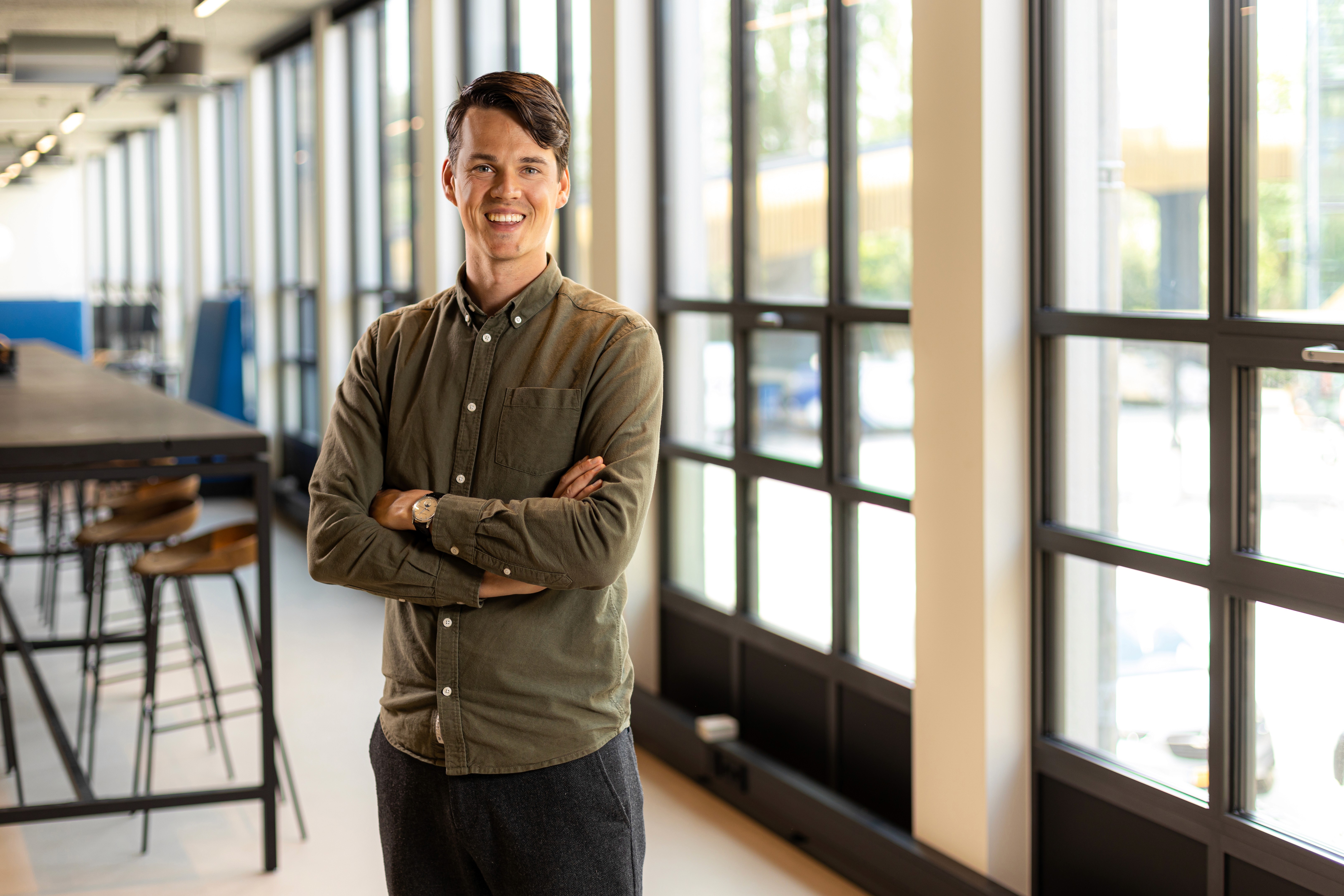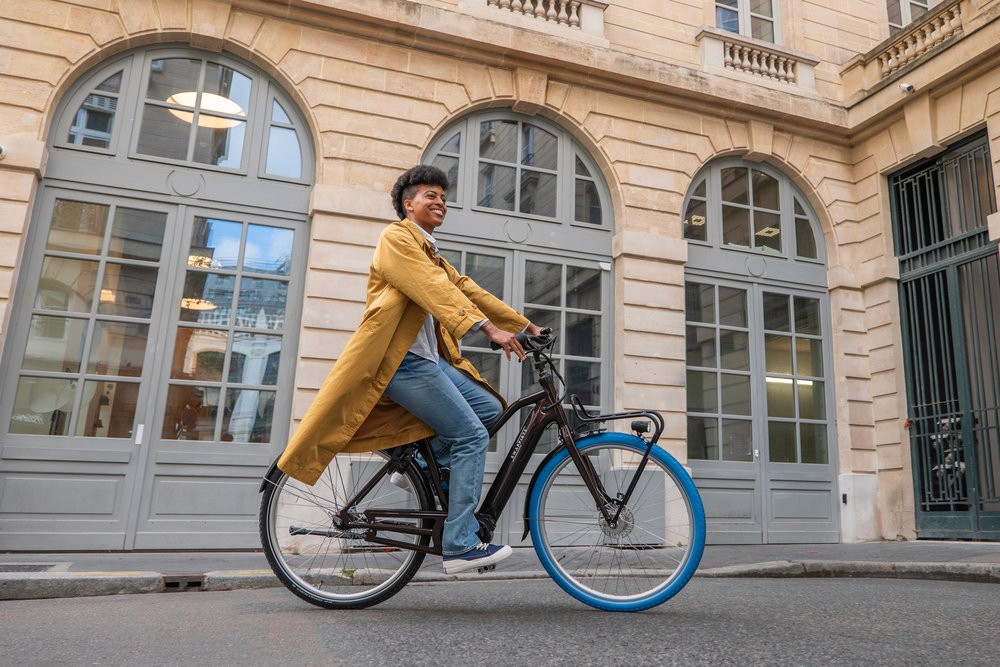Swapfiets' founder Richard on his ride to more livable cities
At Swapfiets, we believe that bikes are the key to a more liveable city. The theme 'liveable cities' is practically the beating heart of everything we do.
The leader of the movement is Swapfiets founder and Sustainability Director Richard Burger. We asked him all about what a liveable city means to him and how Swapfiets contributes to it.
First things first. Can you explain what the term 'liveable cities' means to you?
Liveable cities is a broad concept. Good hospitals and education are part of it, but naturally we focus on sustainable mobility. Cycling is the solution for many cities to become more liveable. Just consider: healthier air, a safer environment, better personal fitness and more social traffic because people are more in touch with one another. Cycling provides more space to do other things. Additionally, our concept makes cycling even easier for people who have been doing it for a long time. For people who don't cycle yet, we offer an accessible and great way to get involved. You don't have to spend time studying the technology or costs of a bicycle, but you simply choose which Swapfiets suits you and get started right away. That makes us very relevant to cities in terms of mobility.
The second aspect of liveable cities is that a bicycle still needs to be produced. In addition, it needs to be serviced and maintained and at the end of its lifecycle it requires some action as well. In many big cycling cities, you see that bikes are left behind as stray bikes, that they are broken or not safe and many spare parts are needed. With a circular model, we try to centralise this. You only pay for the use of the bike. When you no longer use it, you return it. If it needs repair, we fix it for you. We always take the material back so we can create something clever out of it. For me, cycling is the best way to create a more liveable city. Smart use of materials ensures that we produce less waste and consume fewer raw materials. For me, those two things lead to a more liveable city.
How did this mission come about?
You don't start with a mission like this, but it's not back-engineered either. We recognised a phenomenon. The Netherlands is cycling country number one, but many people consider owning a bicycle a hassle. You need to go to the bicycle repair shop, if you repair the bike yourself, you need knowledge and specific parts, and then you find out that the lights don't work again or that the brakes don't work. How can a bicycle, which is such a beautiful thing, be such a hassle? How can we turn that around? This is how we came up with the 'bike as a service'. Gradually, we learned that this is a circular model. It provides benefits for both our members and the planet. Moreover, our concept only works in cities. This is how the idea of liveable cities was born. It's about more than just renting out bikes. It's also about how we lay out our shops, what kind of electricity we use, the change we try to make in the industry and the initiatives we set up with local parties. We are also a major employer. Liveable Cities is about much more than just bikes.
Playing the devil's advocate: is this more sustainable than buying a bicycle that would last you the rest of your life?
Short term, using existing products for longer often has the most positive impact in terms of sustainability. However, this depends on a number of assumptions. The question is whether you really only need to visit the bicycle repair shop once a year, if you buy a bicycle now. That is different for everyone. We know that a bicycle bought in a shop breaks down three times faster than a Swapfiets. This is because we constantly measure what breaks down and then improve it. Another point is that bicycle use is still on the increase. Between 2020 and 2050, the number of cyclists will grow astronomically. If you produce more bicycles, do it in a circular and sustainable way. That way, it has less impact over time. The bicycles we develop are not made to be sold. Sales are about beautiful bikes, trendy colours and the latest technology. We want to produce a bike that is timeless, rides well and lasts a long time. Besides, your needs change over time. When you are a student, you might start out with an Original bike. If you start working in the city after three years and want an e-Bike, you can return the Original so that another user does not have to buy a new bicycle. So in the long run there are a lot of people who don't need to buy a new bike because of this circular system. We always sell a working bicycle, but it is not always a new bicycle. The bike might have a scratch. We are proud of that.
Do swap bikes last longer because people know they will return them one day?
We hear different stories about this. On the one hand, people handle it with care, on the other people say: don't be gentle, it's a rental. The truth lies somewhere in the middle. In the bigger picture, we see that things are going really well and that a Swapfiets needs repair on average one to one and a half times a year. That is because we have developed our bikes over time. Funnily enough this sometimes creates a misconception. Members think: my bike never breaks down, so what am I paying for? We sometimes hear members say that they hardly ever use our service. That is the intention. We want to make the most comfortable bike that never breaks down.
The theme of liveable cities naturally touches all the countries in which Swapfiets operates. How do countries with a different cycling culture than the Netherlands react to this story?
Listen; building cycle paths is not our business. That bicycle network has to be in place or growing very fast. We expanded to London and Paris because the local authorities are working on optimising their infrastructure. They need us to fill those cycle paths. This creates some sort of joint growth towards a more liveable city. But even in a cycling city like Amsterdam, we definitely make a difference. We now see, for example, that we retrieve many missing bicycles and we find fewer bicycles abandoned in the streets. In new cities, for a fairly high percentage of people their Swapfiets is their first bike ever. The biggest shift is in e-Bikes. We see e-Bike customers leaving their cars at home to make the same trip on an e-Bike. Obviously this makes a mega-impact on liveable cities.

What is the most important lesson you have learned so far as Sustainability Director?
The biggest lesson is that one cannot do it alone. It is not a one person job. When I started in this role, there were some quick wins, but if you really want to be sustainable, it has to be part of the company culture. It has to come back in everything you do. If we produce a circular bicycle, it is no good if the parts are delivered in non-recyclable packaging. Those parts are returned to the Netherlands by truck. You need to consider everything. The biggest issues where we can make the greatest impact take the longest to change. The quick-wins are achieved by having many conversations and asking where things can be done differently. The example of packaging is a win-win-win for everyone except the packaging industry. But then again, I don't really care about the packaging industry at all.
Within Swapfiets, you are the spokesperson for sustainability. Is that a difficult role?
I love telling this story and I support it 100%. It is not a belief, but a fact that sustainable business is the best way forward for people, planet and profit. To build a successful business, considerations need to be made on profit and speed. What we do simply makes sense. We have hard evidence why a circular bicycle is better for the city. You can also argue that electric cars are better for the planet, but that is a more complex matter. I prefer to be honest about where we are now and be ambitious about the future.
About Swapfiets
Swapfiets is the world’s first ‘bicycle as a service’ company. Founded 2014 in the Netherlands, the scale-up quickly developed being one of the leading micro mobility providers in Europe with 280.000 members in the Netherlands, Germany, Belgium, Denmark, France, Spain, Austria and UK.
The concept of Swapfiets is quite simple: For a monthly subscription fee, Swapfiets members receive a fully functional bicycle or e-mobility solution for their own use. If needed, a repair service is available within 48 hours to repair or directly swap the two-wheeler at no additional cost.






